As one of the most visited islands in the Caribbean, it seems the average tourist already knows Jamaica has plenty to offer. The Caribbean’s third largest island boasts white, sandy beaches, eye-catching topography and a lively culture that you can’t help but fall in love with. What a lot of people don’t know is that the marine life of Jamaica makes it a not-to-be-missed scuba diving destination, too.
With its warm, tropical waters, excellent visibility and extensive biodiversity, Jamaica is an ideal dive destination for anyone wanting to mix vacation fun with time under the surface. Furthermore, its variety of dive sites, which cover coral reefs, shipwrecks, wall dives and caves and caverns, mean there really is something for every type and level of diver.
Like the sound of diving in Jamaica? Here are some of the coolest animals you might see on a dive in this Caribbean paradise.
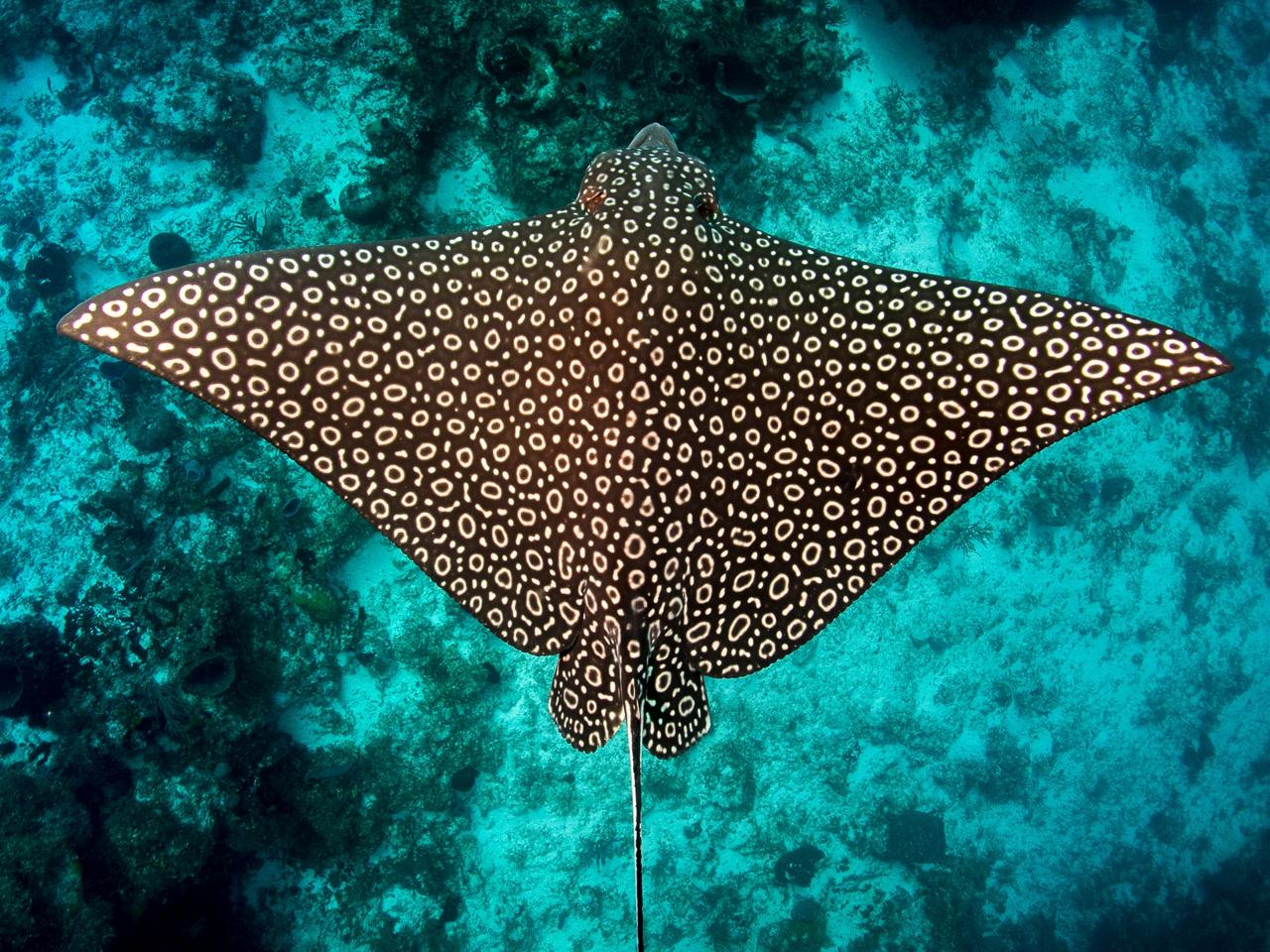
Spotted eagle rays are one of the most mesmerizing marine creatures to encounter — and Jamaica is a great place to see one. These winged fish are often encountered gracefully passing by during a dive, and they are easily identified thanks to their beautiful, name-giving spotting and long tails.
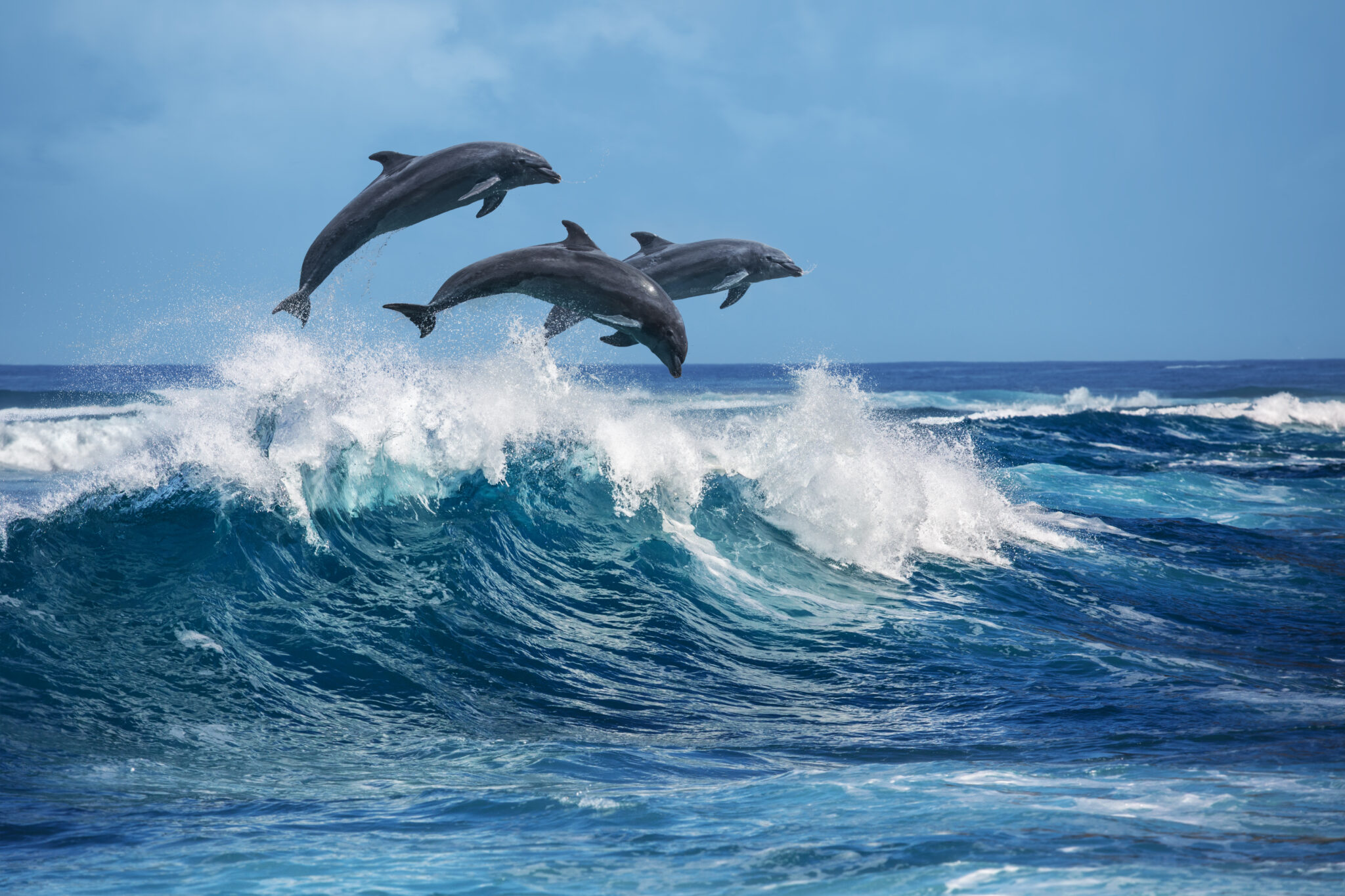
Whether you’re taking a boat tour or exploring the underwater world, it’s always worth keeping your eyes open for dolphins. Jamaica offers visitors the chance to swim with one of the world’s smartest mammals, with several dolphin species known to frequent the waters. Commonly seen dolphin species include bottlenose dolphins, spinner dolphins and Atlantic spotted dolphins.
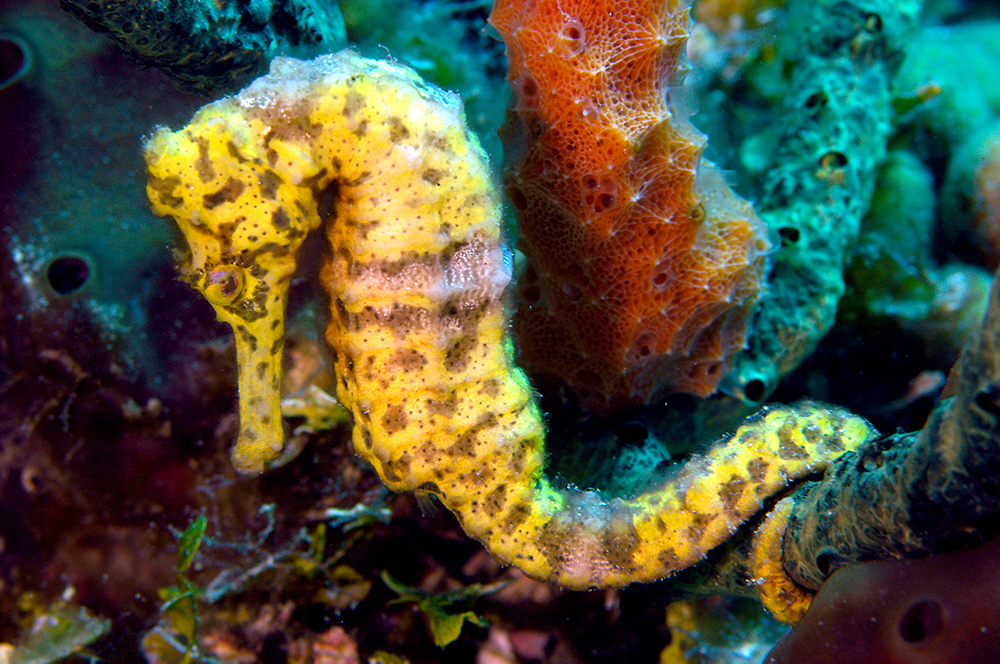
The seahorse you are most most likely to encounter in Jamaican waters is the longsnout seahorse. These sizable-yet-slender seahorses can grow up to an impressive seven inches long. They also rely heavily on their ability to camouflage within their preferred choice of habitats, which are seagrass beds, coral reefs, and mangrove. Divers often spot them anchored to the seafloor via their prehensile tail.
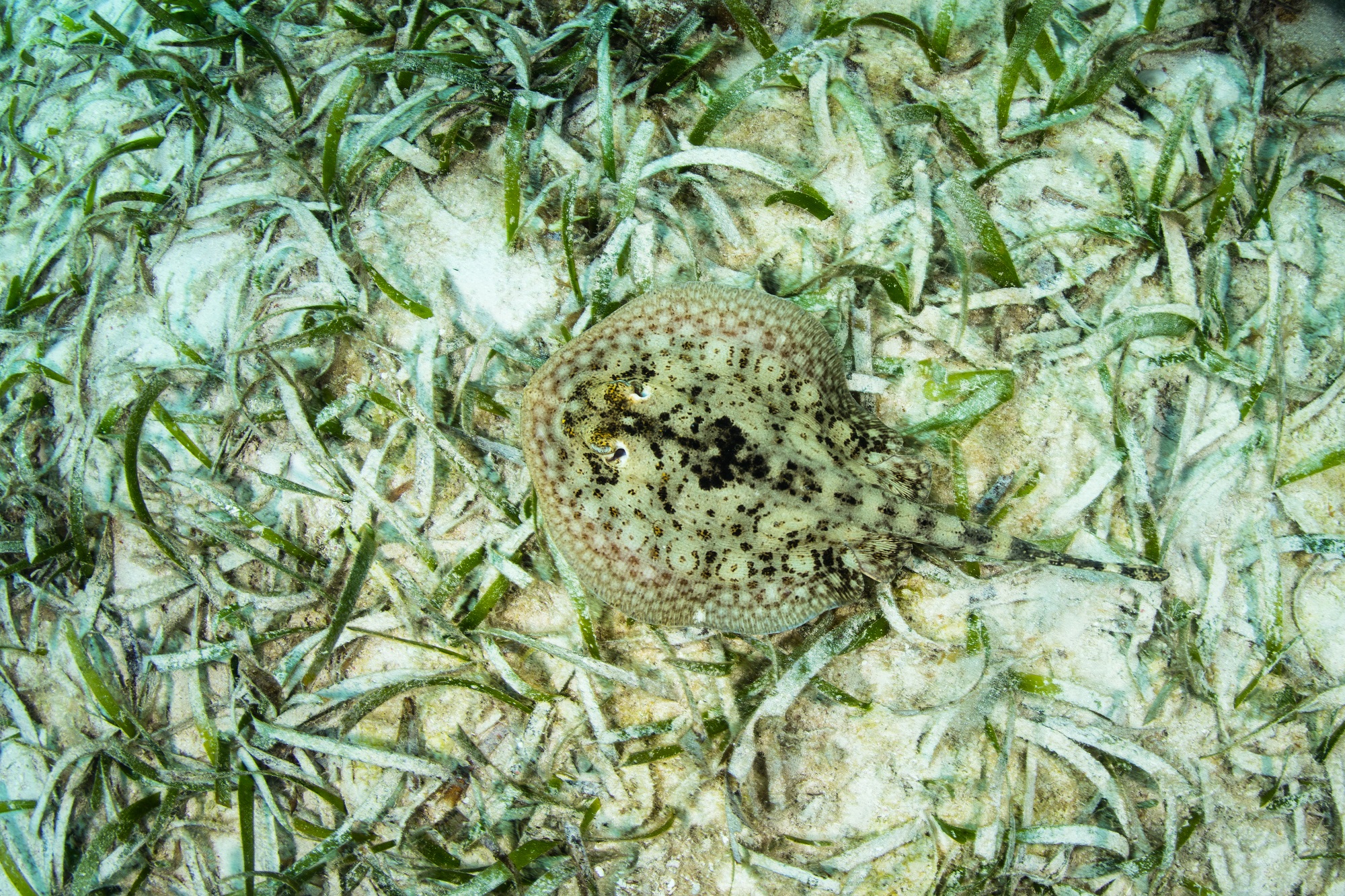
In addition to spotted eagle rays, the marine life of Jamaica includes several other species of stingray. One of the largest stingrays you might spot is the southern stingray. They can reach up to 1.8 meters (5.9 feet) across, making for a potentially memorable encounter.
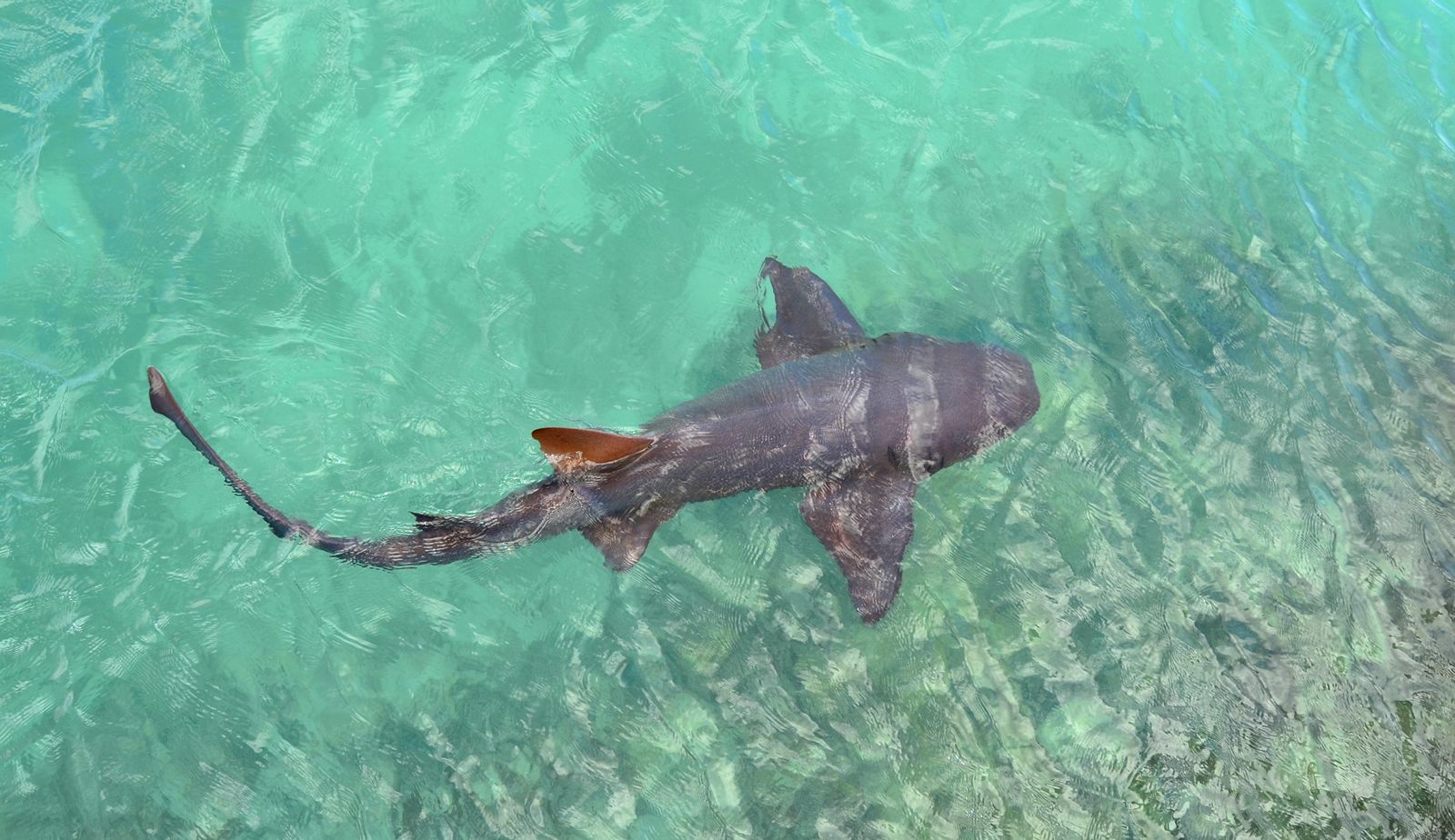
Several shark species are present in the waters surrounding Jamaica, but the one you have the greatest chance of meeting is the nurse shark. During the day, these nocturnal creatures can usually be found resting on the ocean floor before becoming active at night. These sharks also possess specialized teeth for chomping on their favorite foods — shellfish and small fish.
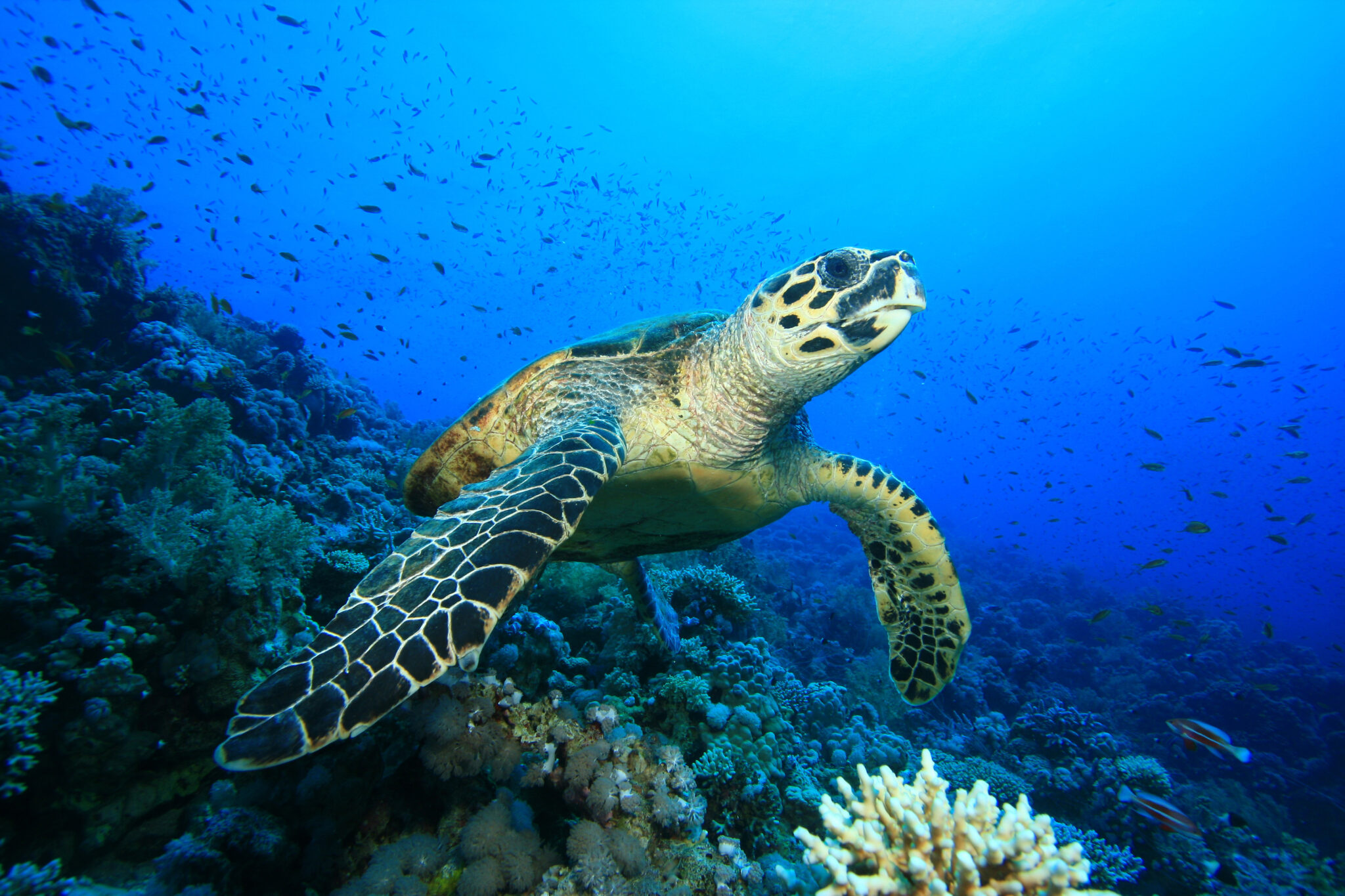
Hawksbill turtles are the most commonly encountered turtle species in Jamaica, even though they are critically endangered worldwide. These turtles, which are identifiable thanks to their hawk-like appearance, spend a lot of their time around coral reefs. It’s here that these omnivorous turtles feed on their favorite foods, including sea sponges (a real favorite), jellyfish, sea urchins, corals, mollusks, and crustaceans.
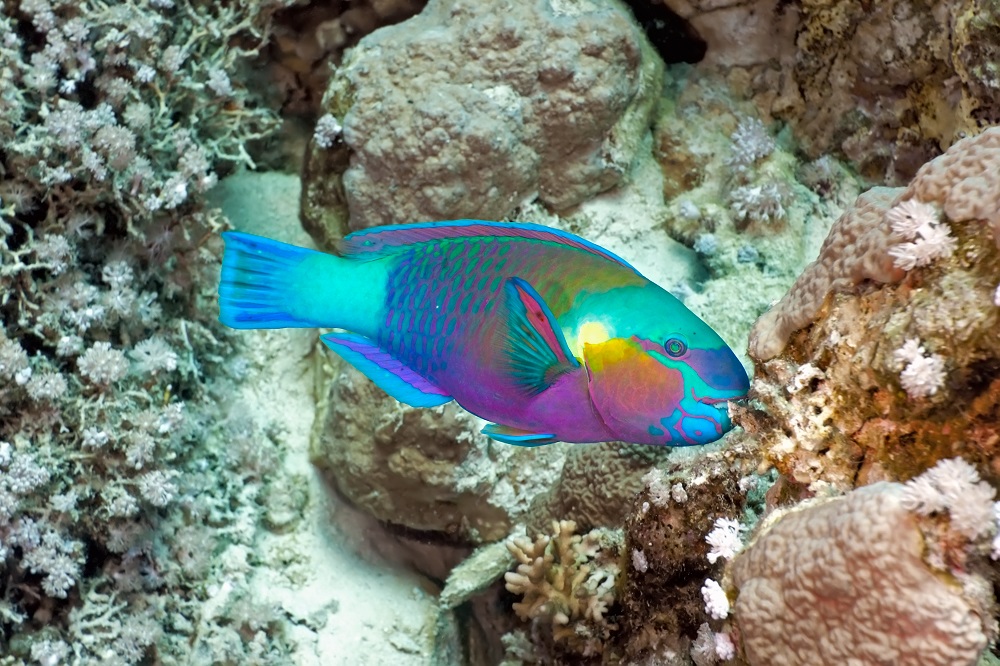
While a common sight at many dive sites, it’s never a bad dive when you see one of these rainbow-colored giants. These dazzling fish can grow up to an impressive 1.3 meters (four feet), making rainbow parrotfish the largest herbivorous fish in the Caribbean. They enjoy a diet of seaweed and algae and are most often seen using their beak-like, fused teeth to scrape food off coral.
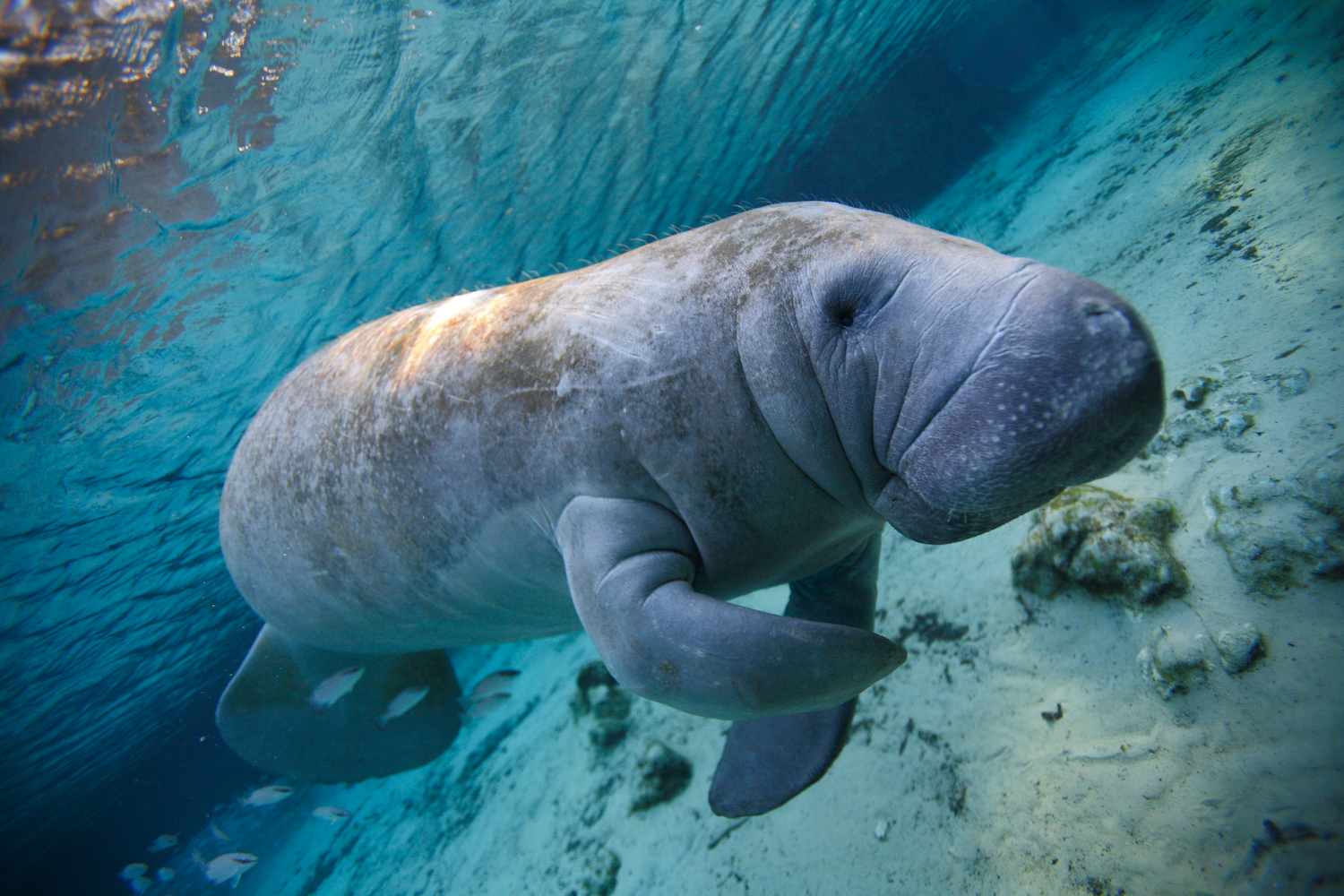
A rare, but not impossible, marine animal seen in Jamaica is the West Indian manatee (Trichechus manatus manatus). These sizable “sea cows” can live in saline, brackish and freshwater. This means it’s possible to meet one almost anytime you’re close to open water on the island. However, due to environmental pressures, including habitat loss, pollution and vessel strikes, manatee meetings in Jamaica remain an uncommon event.
Feeling inspired to get in the water and seek out the best of what Jamaica has to offer? Get in touch with the experts at PADI Travel for advice on how to make your dream dive vacation come true. Alternatively, for more information on diving in Jamaica, click the button below.
Read More About Diving in Jamaica
Share This